-
Posts
1,991 -
Joined
-
Last visited
-
Days Won
38
Content Type
Profiles
Forums
Downloads
Gallery
Posts posted by Ton Plomp
-
-
Why is there an allocation at the tunnel AND at the indicator, while there's no similar allocation in the Replace Array Subset implementation?
Good question and observation, I *think* i know the answer. I read once on the NI forums to force LabVIEW to handle arrays inplace (eg. on the same memory location) in a subvi there should be (at least) one case where the data is not allocated, this would force the other cases to use inplaceness also.
I think this is the main difference in both VI's, maybe if you add another case (-1) where the data just flows through gives you a better solution.
Ton
-
then when I'm finished I select <Shift>+<right-click> and select the autotool to 'on'.
Using <TAB> will turn it back on
Ton
-
Note that a boolean in labview is actually 8bits. I would typecast the double array into an array of U32's then convert each U32 into a boolean array using the Number to Boolean function if you need an array of booleans.
That's why I use the 4.x conversion
The reason the endian conversion went wrong was because you endian-conversed the whole data-set as one. The following code should work:
The decimate and interleave array split the array in byte-order (I use 8 arrays) and reconnects them reversed.
Ton
-
Hi Paul,
it seems strange to me as well, but here are my thoughts. First I don't think you need 4.x conversions. The only thing (as far as i know) that changed is the storage of booleans that were stored as single bit and now are stored as bytes (but we can use that).
I'm not sure about 7.1 but maybe you are converting EOL/EOF? these shouldn't be converted (right click on the read file vi).
Now to control what happens you have to make sure you read the same data from the file and then do the following:
The boolean array will show (bitwise!) where the data differs, you can check this after every conversion made also have a look at the length's of both converted boolean array if these differ by 32 you are reading the length of the data as well
One addition in the not-working state you can skip the first type cast and how does you're endian conversion work on 15000 csg's?
Ton
PS could you add a sample file?
-
Hello...Problems.....
I have been trying just about every conversion known to man in serial communicaiton. What am I missing.
I have a value 0007 0008 coming as a hex value. If you try converting it to a number, its value is 0 is labview.
I have even tried trimming it, but trim function treat two digits 00 07 00 08 as one, so it trims 00 instead of 0 and also tried trimming whitespace, but labview hex values do not contain whitespace. So 00 00 cannot be trimmed.ahhhhhhhh.
I understand that the hex->number is reading the first value 00 and returning that as the number value. The only way the converter works is if the hex value was 0708 which is translates to the correct decimal value of 1800. What am I not doing? Or what do I need to do... Thanks.
Hi j21,
show us your code and we might take a look at it.
 but the coffee was good so....
but the coffee was good so....but first 00070008 is 458760.
This '0007 0008' is that ASCII,dec, hex, oct or unicode?, is there a space after the 7? How many bytes (2/3/4/5/8/9)
Ton
PS Michael when can we add 8.2 to our profile?
-
Do the various icon editors discussed here allow one to create the icons needed for executables?
I have not upgraded yet to 8.0 (going to go directly now to 8.2) but if one refers to the application builder that goes with LabVIEW 7.1, I refer to the icons shown on "Application Settings" tab.
Don
The icon editor discussed here is not meant for executables but for VI-icons. However it can be modified to build .ico files to go with the executables!
Ton
-
Hello All,
I am working on a combined AO/DI application.
I need to use a correlated timing for the digital input
I create a counter as clock source for the DI. This counter uses ao/StartTrigger as start trigger. On a PCI system teh signals are very good correlated.
On a USB 6251 (which I don't have at my development station :thumbdown: ) the analog output is started 2 second after the analog output comes on screen. Does anyone know if the correlation is still correct? because that would be a major issue for me!
Thanks a lot,
Ton
-
I suggest you go carefully when upgrading from 8.1 to 8.20.
I had a large application that was using IMAQ and Vision, and after the upgrade many of the VIs for these packages were 'missing'.
Still trying to recover.
And how is recovery coming?
A reinstall of IMAQ didn't do you any good?
Ton
-
I'm running LabVIEW 8.01
LabVIEW 8.01 handles data type conversions differently.
When converting a Double (36611.0) to an I16, the value of the I16 is maxed out Binary (111111111111111)
When converting a U16 (36611) to an I16, the value of the I16 is the same value as the U16 in Binary (1000111100000011)
It is strange indeed, in LV 8.2 and 7.1 the same occurs. But looking at the help states that:
This function rounds all floating-point numer values to the nearest integerBut still it should not do a typecast of U16 to I16 but a conversion.. seems like some work for NI
Ton
PS there is no difference when connecting the U16 directly to the indicator
-
I just downloaded it, but you can't activate this version with the 8.0 serialnr, but you can use it in evaluation mode (30 days).
With a valid SSP you can use this version without problems!
Ton
-
Wow you're fast,
but it is correct you cannot access data insade an object directly, you have to make a method for this.
On the NI forums there is a white paper about OO in LV 8.2, this is a very good explenation about the implementation in G. I think this white paper should be shipped with LabVIEW
Ton
-
Drink a beer on me in Austin!
Ton
PS who is memeber number one?
-
hello everybody,
am a 21yr old. am doing my masters in photonics in india.my project involves controlling the yokogawa digital oscilloscpe using labview.i know very little abt labview.am having a problem in dynamically collecting data.
i need to control a translation stage and a yokogawa simultaneously.as the stage moves with a detector on it, which is inturn connected to the yokogawa,the data from the scope needs to be taken dynamically - frame by frame. i got lv7.1.
i'll be grate ful if someone can guide me a bit.
love
prasan
Cross post
-
Not fixed in 801
And fixed in LV 8.2 :thumbup:
-
Here is the direct link:
Does anyone knows if this version ships with the august package?
Ton
-
In conclusion be very careful when you install a Labview built application on a development machine, and if you should find yourself in a similar situation search the regestry for "<path to setup.exe>", and delete all references.
Thanks,
I have an issue where the builder is looking for the february device drivers disc for some reason, reinstalling the may discs didn't help.
This is very helpfull, but could you give a pointer to where this registry entry is?

Ton
-
1. LabVIEW locates XControls by name only, even though it stores paths in calling VIs anyway. (The same applies for subVIs.)
2. LabVIEW seems to load the nearest XControl to the VI that loads it. For example, if a VI loads XControl "foo.xctl", and foo.xctl is in the same directory, it will always load that one. It will not load a foo.xctl in a different directory, because it uses a nearest-neighbor search. (Or so we hope.)
2a. When an XControl is loaded, you cannot load another XControl with the same name. (This is also the same as with subVIs.)
2b. If an XControl called "foo" is in memory, and you try to load a different XControl also called "foo", LabView won't do it. It will use the "foo" already in memory.
This is normal behaviour. LabVIEW stores an object (VI/CTL/XCTL) as a RELATIVE path, and if it don't succeed in finding such an object it uses the search sequence you can heavily tweak! (in options/paths/search paths)
Then it has all the xcontrols in one namespace so only one can be loaded.
What you could do is put the xcontrol in a library (foo1.lvlib:foo.xctl and foo2.lvlib:foo.xctl). I'm not so positive about lvlibs right now but maybe in the future (near or not so near
 ) they improve!
) they improve!Ton
-
Now, I did try putting a sequence inside the case statement but it isisted on the last sequence (the message one) being finished before it would do what was in the first two boxes in the sequence.
I checked the NI site and there was an article there that said something about all things being completed in a sequence before it would carry out the instructions in the whole thing? I thought this was odd!
Programing with pictures has been a struggle but I'm getting the hang of it.
Programming in pictures aouch.....

But what sequence structure have you used?
have a look at Darren's nuggets on flat sequence
Ton
-
Hello Seoul,
If I were you I'd contact the NI helpdesk. Because 8.2 is not released yet, so the beta help is you goal.
Ton
-
Am I missing something simple or is there no easy way to open a subpanel VI block diagram window while it is loaded in a subpanel ?
Hello bbean,
what code are you using?
BTW i found an option in the context menu:
This will add a context menu item on the subpanel, where you can open the BD, maybe something for you?
And this code was succesfull for me:
this is the code from the subpanel vi, it opens the BD if I click on the (running! sub panel VI) boolean
Ton
-
-
did remember

but 8.0 is lightly faste (0.2 ms)
Ton
-
Well, that's somewhat disappointing.

Thank you very much.
Interestingly, your FFT is approximately twice as fast as mine.
I'm running LV7.1 on a 2.4 GHz P4 w/ 1GB RAM. I wonder if it's all because of differences in machines, or whether NI has recoded their FFT between 7.1 and 8.
Thanks again,
Gary
I'm not sure, but my computer is something like yours.
If i rememeber i'll test it this weekend at home on 7 and 8.
Ton
-




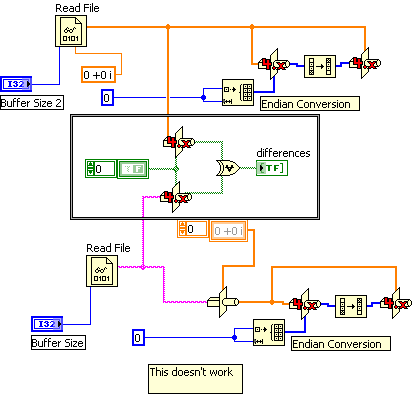
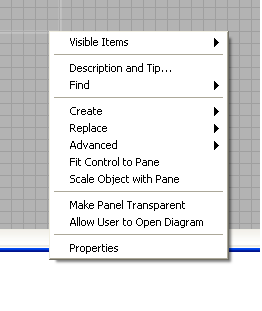
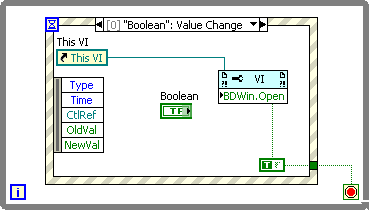
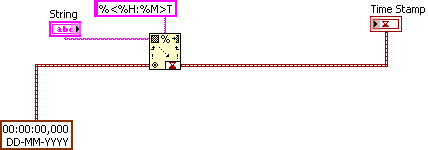
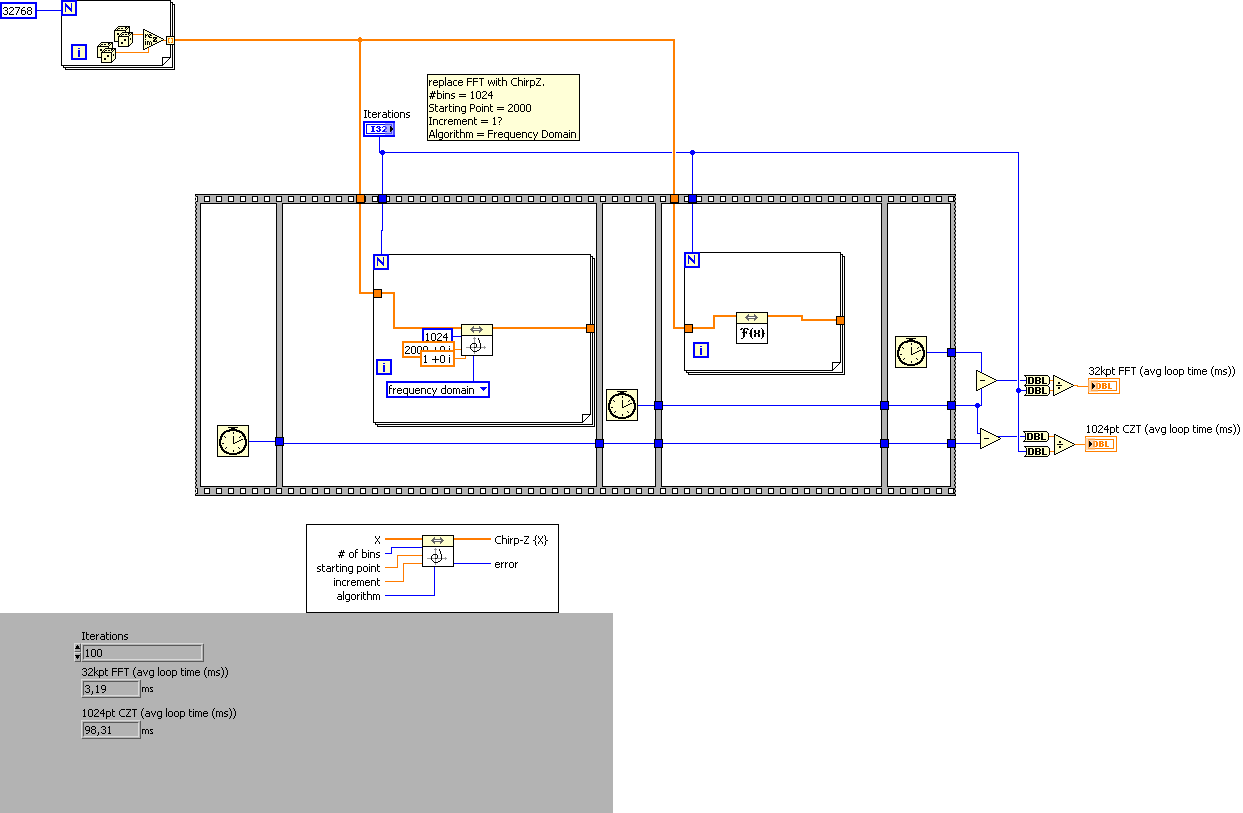
FRONT PANEL PRINTING PROBLEM
in LabVIEW Bugs
Posted
This is a bug originated in LV 8 LV 8 buglist and solved in 8.2,
I don't have a fix for it (and i've tried ), only upgrading will do
), only upgrading will do
Ton